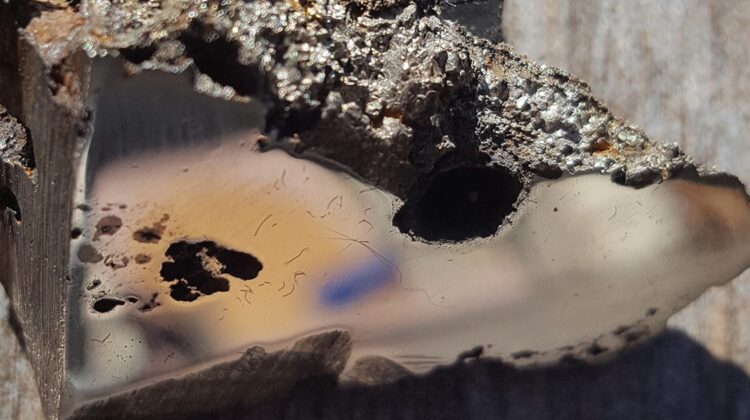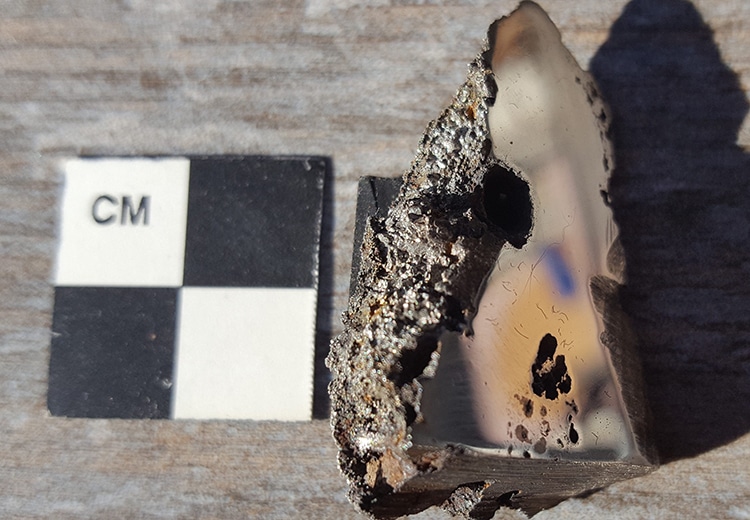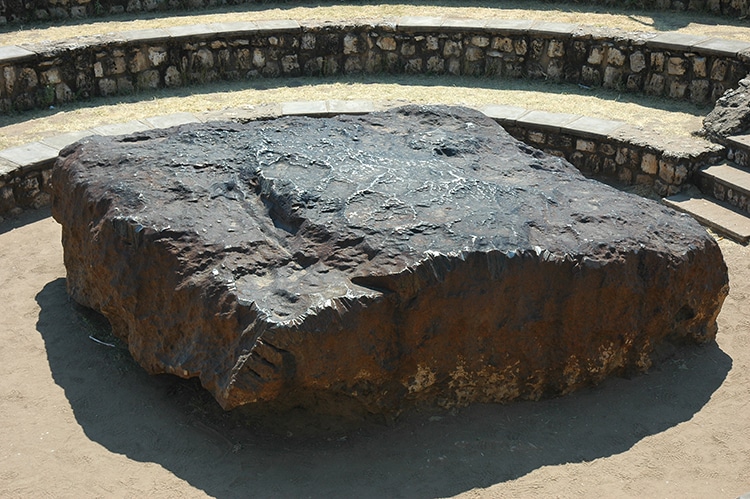
Space is full of rocks. This “celestial debris” known as meteoroids hurtles through space, occasionally entering Earth’s atmosphere where the materials begin to burn up. These “shooting stars” are meteors. Most are obliterated before they come close to the surface of Earth, but a few survive the fall. These rocks which hit Earth are known as meteorites, and they are a scientist’s dream. Meteorites provide hints to the chemical composition of the universe. Excitingly, a meteorite which fell to Earth and landed in Somalia in 2020 has been revealed to contain two new minerals not found on our planet.

The meteorite in question is the ninth largest ever discovered at a whopping 15 tonne (16.5 U.S. ton). It was found near El Ali, a town in the Hiiraan region of Somalia. A 2.5-ounce piece of the space rock was taken as a scientific sample and sent to the University of Alberta. There it was analyzed by Chris Herd, a professor in the Department of Earth & Atmospheric Sciences and curator of the University of Alberta’s Meteorite Collection. Herd began to decipher the meteorites composition. “Whenever you find a new mineral, it means that the actual geological conditions, the chemistry of the rock, was different than what’s been found before,” he says. “That’s what makes this exciting: In this particular meteorite you have two officially described minerals that are new to science.”
Herd’s results classified the meteorite as an “Iron, IAB complex” example, of which 350 have been discovered. Despite other similar meteorites being studied, this small slice of rock contained two previously unknown minerals. Minerals are elements or compounds which form the building blocks of rocks. Think of quartz or feldspar, which are both common minerals. Yet the two new minerals discovered are not naturally occurring on our planet. It usually takes a while to confirm whether a mineral in a meteorite is in fact new; however, these were easy to match given the fact that scientists have artificially synthesized them before. A third mineral is also possibly a new type, but more investigation is needed to confirm this.
Andrew Locock, head of the University’s Electron Microprobe Laboratory, aided Herd in identifying the new minerals. The compounds have been named elaliite and elkinstantonite. The former is named in honor of the town nearby the meteorite crash site, and the latter is in honor of Lindy Elkins-Tanton, vice president of the ASU Interplanetary Initiative, professor at Arizona State University’s School of Earth, and Space Exploration, and principal investigator of NASA’s upcoming Psyche mission. “Lindy has done a lot of work on how the cores of planets form, how these iron nickel cores form, and the closest analogue we have are iron meteorites. So it made sense to name a mineral after her and recognize her contributions to science,” Herd explains.
The meteorite may contain even more secrets of space; however, studying it in the future could be logistically tricky. The large rock has already been transported to China in search of a private sale, and a future owner may not want to take further samples. However, investigations will continue into this small piece and other meteorite materials held by the university. Herd says, “Whenever there’s a new material that’s known, material scientists are interested too because of the potential uses in a wide range of things in society.”
A meteorite which fell to Earth and landed in Somalia in 2020 has been revealed to contain two new minerals not found on our planet.

Want to learn more about meteorites?

Leave a Reply